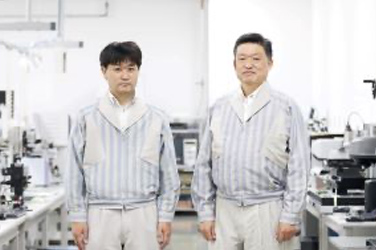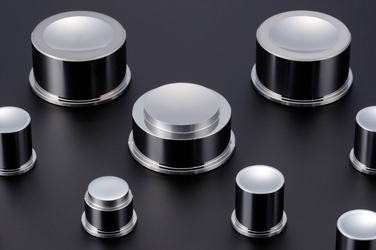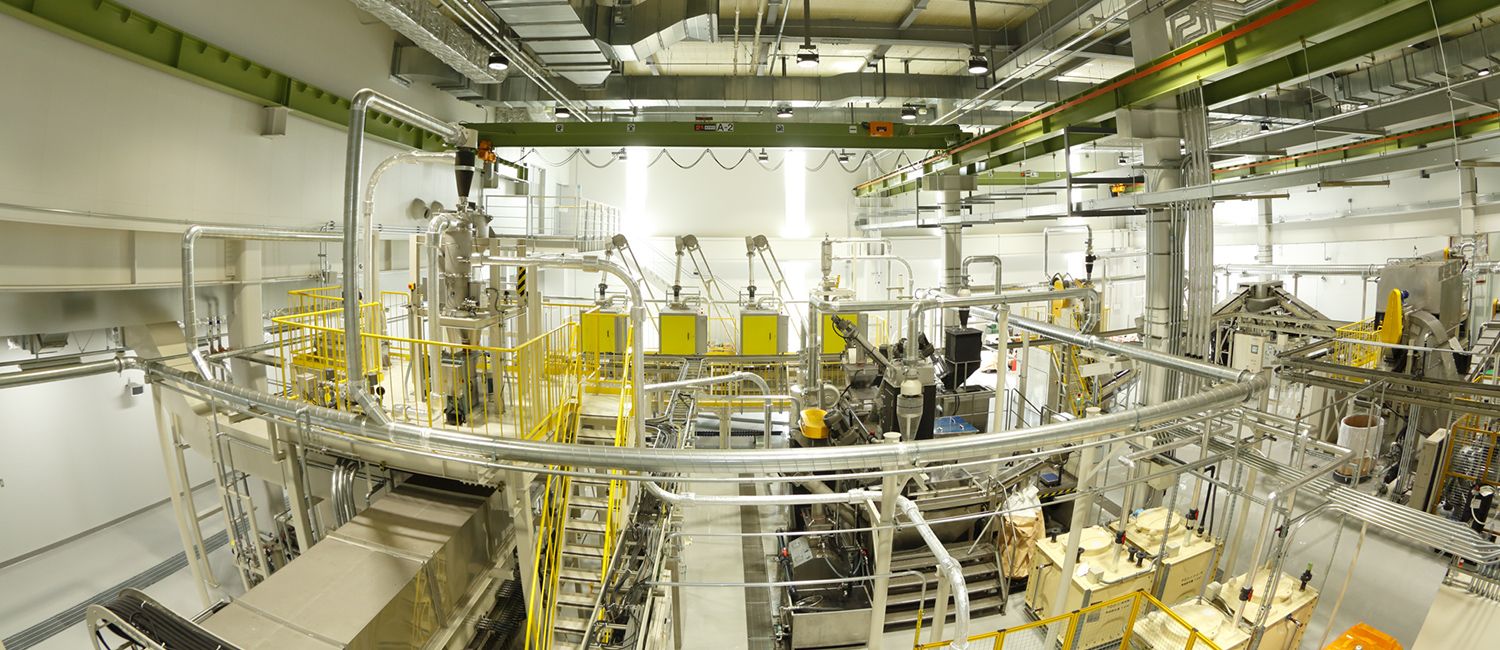

Environmental Technologies
Canon considers effects on the environment and promotes a reduction in the environmental burden at all stages of the product life cycle. Canon is focused on the development of the proprietary environmental technologies that serve as the base of these efforts.
December 27, 2018Featured Technology
Improved Environmental Performance Technology for CT Systems
The Aquilion ONE/GENESIS Edition X-ray CT system from Canon Medical Systems, released in 2017, achieves a 22% reduction in volume and uses 49.6% less power than the Aquilion ONE model released in 2007.
Saving Resources through Compact Designs
The CT system consists of three parts: a large, ring-shaped gantry, a couch on which the patient lies and a computer console used to operate the system.
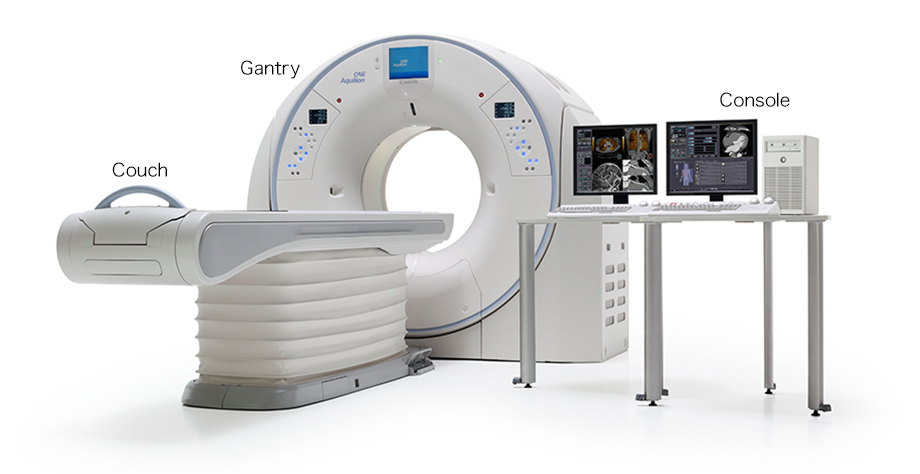

The gantry contains an X-ray tube which generates X-rays and detectors located opposite the tube that receive X-rays after they pass through the patient's body.
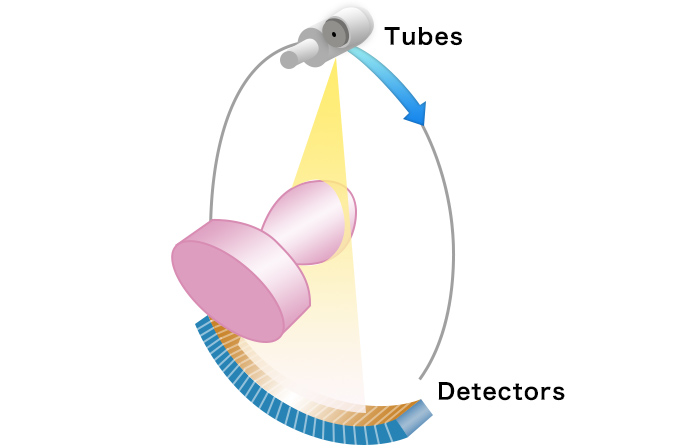

The gantry rotational unit, which contains the X-ray tube and detectors, weighs 700 kg and rotates within the gantry at an extremely high speed of one revolution per 0.5 seconds during a CT examination. This subjects the gantry rotational unit to 40 Gs or more of centrifugal force. It was quite a challenge to find a way to achieve the durability and reliability necessary to withstand this centrifugal force while ensuring that the gantry aperture was large enough to lessen patients' feeling of being closed in, as well as reducing the size and weight of the CT system.
To achieve this, Canon used a high-performance computer to perform a structural analysis. Based on the analysis, the structure of the gantry rotational unit's fixed support base was optimized, reducing the structural material thickness. As a result, system weighs approximately 100 kg less and uses fewer resources.
Reduced Power Consumption
To reduce energy consumption while maintaining clinical performance, Canon focused on reducing the standby power, which accounts for the majority of the energy consumption.
In order to respond to emergency patients, a sleep mode was introduced that makes it possible to quickly wake up the system.
Meanwhile for the arithmetic unit (console), which also consumes significant power, cutting-edge technology was introduced to improve performance while lowering power consumption. Additional efforts were made to reduce the energy consumption of other individual units, resulting in an overall reduction in power consumption of 49.6%.
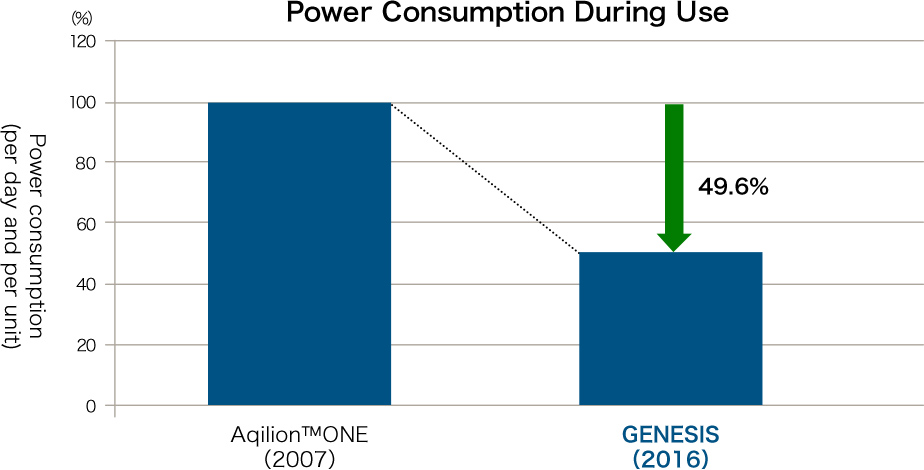

Toner Cartridge/Ink Cartridge Recycling Technology
#Imaging technologies#Social contribution#Automation#Physics#Chemistry#Environmental awareness
Automatic Resource Recycling Line
To effectively use limited resources and reduce waste, Canon pursues "product-to-product recycling" that enables it to repeatedly reuse resources. In 2018, the company completed its Canon Eco Technology Park, at which it introduced an automated recycling system based on a "clean and silent" concept that redefines conventional image of recycling plants.

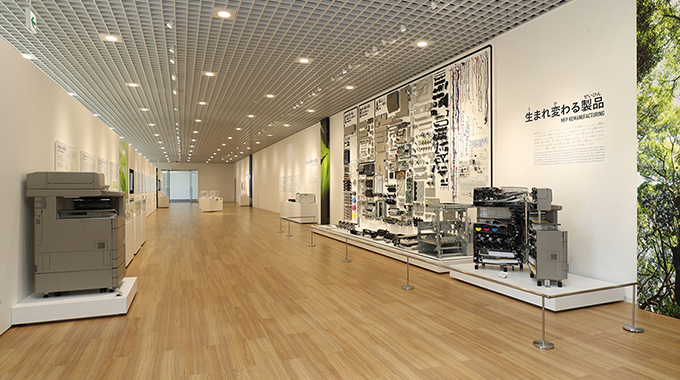
Canon Eco Technology Park Showroom
CARS-T (Canon Automated Recycling System for Toner Cartridge)
CARS-T is an automated recycling line on which used toner cartridges are crushed, and then the materials within them are automatically separated using their different physical characteristics such as electrostatic charge and specific gravity to ultimately recover high-impact polystyrene (HIPS). Various separation techniques are used for each sorting process, resulting in an increase of recovered HIPS sorting purity. In addition, for the first time ever, Canon has incorporated a water toner removal method to help prevent contamination and noise and achieve a "clean and silent" work environment. The HIPS recovered as a result of CARS-T is used as a main material for toner cartridges. In this way, Canon is promoting closed-loop recycling by extracting raw materials from used toner cartridges and then reusing them for new toner cartridges.
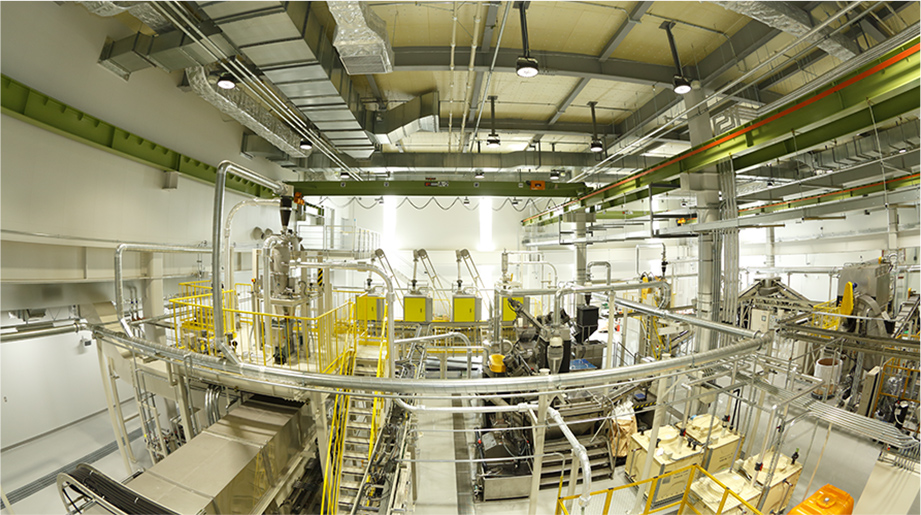

CARS-T
CARS-I (Canon Automated Recycling System for Ink Cartridge)
CARS-I is a system with which used ink cartridges are automatically identified by camera and sorted accordingly. It uses an integrated automated line for processes ranging from disassembly and pulverization to washing. By excluding different materials and processing high-purity recovered plastics, these resources can be reused as raw materials for ink cartridges and other products.


Camera-based technology used for CARS-I; automatic identification and sorting of used ink cartridges
Energy-Efficient Technologies for MFDs
#Social contribution#Electrical engineering#Physics#Chemistry#Environmental awareness
IH (Induction Heating) Fixing Technology
Toner-Fixing Technology that Reduces the Warm-Up Time
High-end, high-speed office multifunction devices (MFDs) conventionally required significant start up, or "warm-up" time. Due to the high pressure and temperature required to fuse toner to paper at high speeds, as well as the use of a large, highly durable fixing roller with a high thermal capacity, there was a lengthy wait for the temperature of the fixing roller to reach the level at which toner fixing was possible.
To remedy this, Canon developed a highly efficient induction heating (IH) method that employs an electromagnetic induction and a thin-walled fixing roller. The roller is heated via IH by applying a high-frequency electrical current through a coil built into the roller. Consequently, this method offers superior thermal efficiency and has made possible the fusion of toner to paper even with a thin-walled fixing roller. Following thorough consideration of the thermal and mechanical characteristics of materials, Canon improved its roller-holding method and fixing unit structure and completed design of a highly durable fixing roller. To ensure stable temperature control, the company also developed a low-loss, high-frequency inverter power supply.
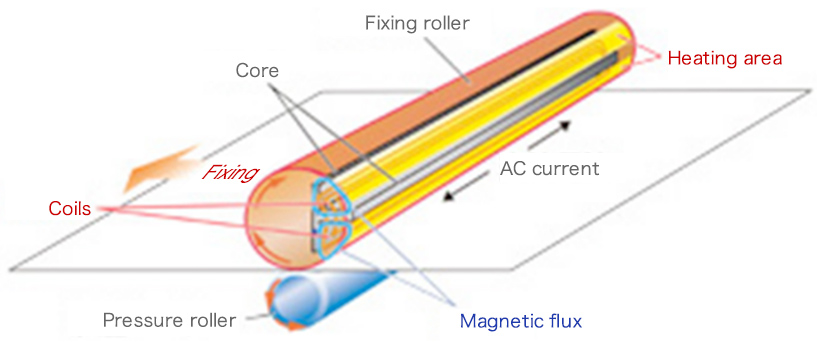

As a result. warm-up time has decreased to 1/6 of the previous time (Canon research), and the TEC value--the energy saving evaluation standard for determining compliance with the International Energy Star program--has decreased to 1/3 of its former level (Canon research).
Warm-Up Time Comparison


Induction Heating Fixing Technology (22 seconds)
*In order to view videos, it is necessary to consent to the use of cookies by our website. If the videos are not displayed, please click the "Cookie Settings" and accept cookies.
On-Demand Fixing Technology
Toner-Fixing Technology that Achieves a Quick Startup Time and Saves Energy
For laser printers and MFDs, heat and pressure are applied to fix toner to paper. With the conventional roller fixing method, the roller was heated through a heater built into the fixing roller, and it was necessary to continuously supply power while the printer was on standby in order to maintain the temperature of the roller and achieve a quick start-up time.
For Canon's proprietary on-demand fixing method, a ceramic heater is used to directly apply heat to a fixing film sleeve that has a high thermal conductivity and low thermal capacity. The heater operates only when the fixing film sleeve rotates, and heat is applied to the toner through the film to fix the image to the paper, thereby achieving a quick startup and saving energy.
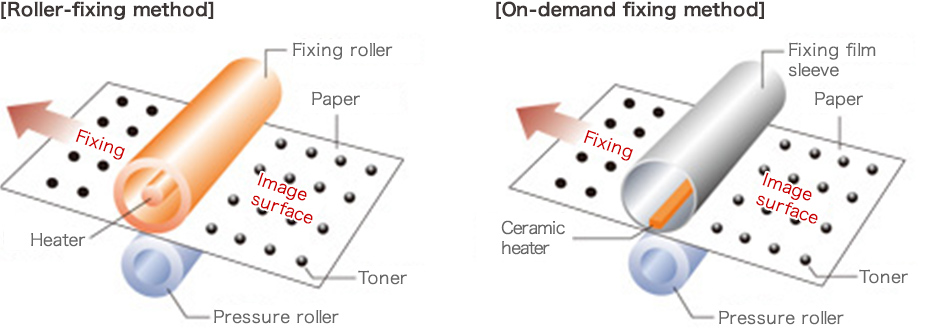

Differences Between the Roller Fixing Method and On-Demand Fixing Method
The fixing film has a three-layer structure comprising a base layer, elastic layer, and surface layer (or in the case of monochrome devices, a two-layer structure consisting of a base layer and surface layer).
For the base layer, a material that has a high thermal conductivity and low thermal capacity is used. It can be quickly heated and used to efficiently apply heat to the toner. In addition, the elastic layer between the base layer and surface layer uses a special kind of rubber, which adheres to the uneven surface of paper in order to uniformly apply heat and pressure. The surface layer is made of a fluoropolymer with characteristics that increase its ability to stop toner from bonding to it.
The ceramic heater consists of a ceramic substrate covered by a resistive element and protective layer, and heat is generated by applying an electrical current to this resistive element. To efficiently transfer the heat generated by the resistive element to the fixing film, the ceramic substrate and protective layer are designed as thin layers, while the heater holder supporting the ceramic heater utilizes heat-resistant resin that produces a heat insulating effect.
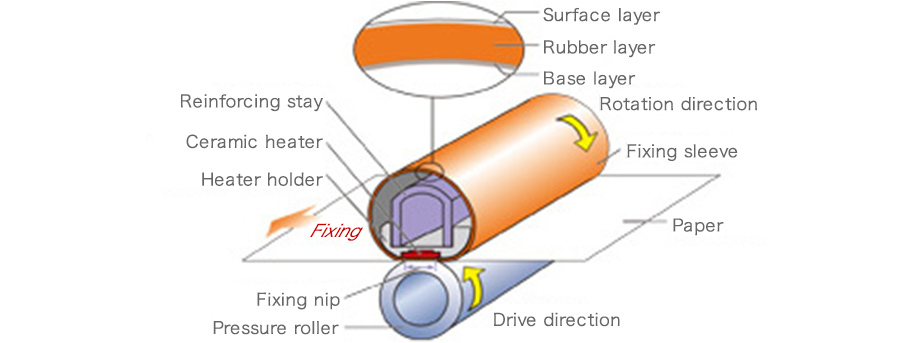

How the On-Demand Fixing Method Works (Color Products)
On-Demand Fixing Technology (1 minutes, 28 seconds)
*In order to view videos, it is necessary to consent to the use of cookies by our website. If the videos are not displayed, please click the "Cookie Settings" and accept cookies.


